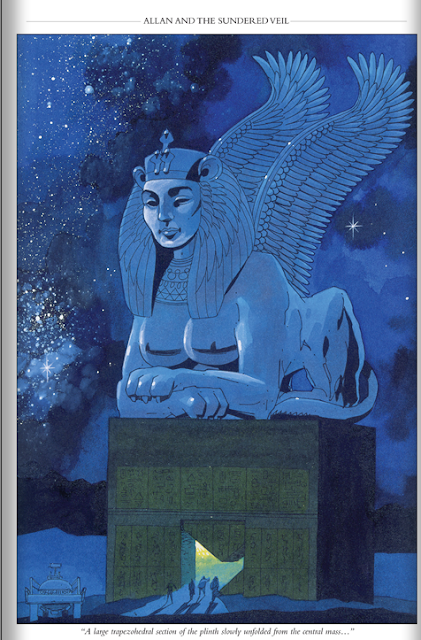Review: The League of Extraordinary Gentlemen, Vol. 1
View all my reviews
Recently there has been a trend, at least in mainstream comics, to take things seriously, too seriously. Everything is political, and everything has to be proselytizing. The takeover by SJW and PC culture have left many comic series to be a shell of their former selves, as tools for propaganda and political posturing.
True, there is a place for that, as ‘Maus’ & ‘Persepolis’ & ‘Blue is the warmest color’ show. But, for the most part graphic novels/ comics are meant to be our window into fantastical worlds. Alan Moore’s ‘The League of Extraordinary Gentlemen’, is a work which emulates in us that feeling of wonder and adventure, without the typical sky beams and world ending threats which have made the current landscape stale.
Familiar to most through the lukewarm and ill received movie adaptation by the same name, the premise of the story is the same. A menagerie of fictional characters from popular novels, such as Allan Quatermain (King Solomon's mines), Wilhelmina Murray (nee Harker) (Dracula), Captain Nemo (Twenty Thousand leagues under the seas), Henry Jekyll/Edward Hyde (Jekyll & Hyde) and Hawley Griffin (The Invisible man). Arrayed against them are antagonists from other popular works, including one Professor James Moriarty (Sherlock Holmes) & The doctor (The Insidious Dr Fu Manchu).
The general structure of the narrative is pretty basic, bad guys are trying to do bad things, morally gray ‘good’ guys are trying to stop them, all in a Indiana Jones style globetrotting adventure thrill ride.
What makes it interesting is the rich world building as well as the stark irreverence to political correctness. The steampunk alternate history Victorian era world of Alan Moore, is filled to the brim with detail, be it in terms of environment, atmosphere or character traits. The 19th century, its final years, and the putrefying, unhygienic, degrading, hedonistic cesspool of London’s underbelly, is presented with eye popping down to earth, at the same time fantastical detail.
In many ways it feels to me akin to the panels which Eiichiro Oda draws for One piece. Even in panels where nothing significant is going on, you can pick out things that are jutting out. A dead dog carcass floating without purpose in the pier below, the unscrupulous members of London’s populace engaging in unsavory activities all around our main characters. All of this in the foreground, not meant to draw attention away from the main narrative, but giving the world a well lived aesthetic.
The second aspect is a bit more controversial. This Graphic novel is not for those who are sticklers for political correctness, and are adherents of the cancel culture. Because the story is chalk full of racist, ethnic and sexist stereotypes manifest in works at the time. ( It is not a great secret that many of the source materials of the respective characters were those aimed towards the male audience, and showed women and other minorities through uneducated lenses).

I mean Hyde is shown as a serial killer exclusively murdering prostitutes, while Griffin is a rapist who uses his invisibility to sneak into a girls boarding school, and do…exactly what you’d expect him to do. Nemo is often referred to with the derogatory names associated with Indians, while the secondary antagonists are basically ‘yellow skinned’ chinese. If you are easily offended, you’d be thrown off in the first 10 pages.
But for the most part this is played for a manner of satirical jest. I mean there are characters in the story who use lines like ‘I say, dear chap’, ‘Right you are, sir’ and the usual ‘women should know their place’. What else would you expect in a story that takes place in 1898, and filled with largely quintessential western white saviors.
Essentially if you want to read the book, better keep your smarmy 21st century sensibilities locked away in the closet and just get into it for the bizarre fantastical steampunk ride. Alan Moore and co, have filled the pages of the book with material, other than the main narrative there are supplementary reading stories, adverts, news articles and tabloids typical of the era, and they have spared no effort to completely immerse you in the Victorian pulp writing of the era.





Comments
Post a Comment